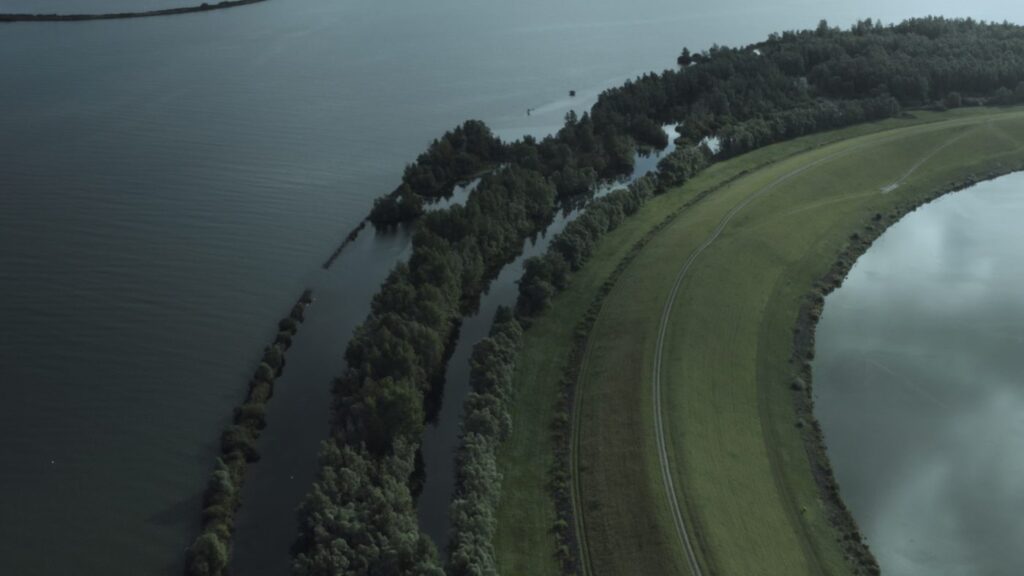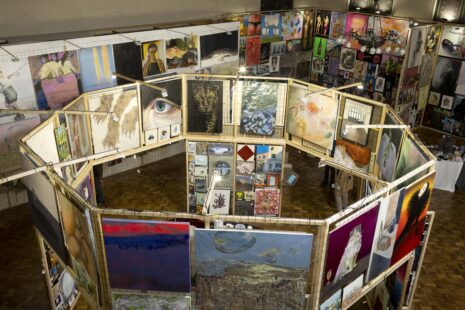“The pandemic and its lasting aftermath has affected our mental and physical perceptions, and how we experience our everyday environments,” curators explain. “Inaccessibility of space alongside enforced distancing and isolation with increased online time, has created an urgent need for new formats of mutual learning that can stimulate new, more caring and sustainable ways of coexistence with others and ourselves. With the backdrop of an ongoing political and environmental crisis, such changes would require reviewing the core societal modes of our collective being. By applying the notion of “intensive places” to the Tallinn region we’ll be undertaking the following research directions and problematics: political imaginary and decoloniality in architecture; intersectionality and urban planning; industrial heritage and its ecological traces; exploring the loopholes and vulnerable structures, public and private spaces and the hidden universes between.”
Locating the exhibition
TOK has invited Estonian and international artists to develop new principles of political and environmental imagination as well as architectural, spatial and infrastructural thinking to find affirmative answers to the question “how to prepare for the future that will be based on the principles of interdependency and new ways of cohabitation?” Challenging violent power structures, reconciling social tensions, and unveiling corporate processes of the exploitation of nature across the different geographical and political contexts – from Ireland to Sudan – that would resonate with the local political and historical state of affairs. The exhibition, which is at the centre of the biennial – a network of intensive places – connects different territorial and mental locations, initiating the processes of their intensification through artistic and curatorial strategies.
At EKKM, a historical building that managed to resist rapidly increasing gentrification, Ukrainian artists Natalia Tselyuba and Yulia Appen will present a story about the conflictual feelings of returning to one’s hometown and wandering among distant memories and new experiences in a dormant neighborhood of panel housing. Poetic audio walks created by Estonian artist Anna Kaarma will guide audiences through the artist studios in the enclave of late Soviet architecture in Lasnamäe. The video work by Dutch artist Tanja Engelberts explores layers of geological time and depicts the consequences of misused space that remain long after our existence. Irish artist Gareth Kennedy exhibits a series of research panels from Time Rite (2019-2044), a sustained engagement of an area of blanket bog on the Atlantic Ocean in County Mayo, Ireland, and a 4,300 year old bog pine. Estonian artist Laura Kuusk invites visitors into an experience that suggests becoming something nonhuman through a performative installation created by a female voice and ambient sound. The installation Gathering Space, by Ola Hassanain (Sudan/The Netherlands) has emerged from an ongoing inquiry into the potential of built space as a form of political discourse. Estonian artist Roven Jõekäär who is preoccupied with “queer-archaeology”, will present recent ongoing project Queer Kalevipoeg that portrays themes of lost queer history and folklore in a format of different pieces of wearable and usable merchandise. Tali Keren (Israel/Palestine/USA) points to the layered ideological mechanisms of nation-building in Israel and how they are used as tools for occupation and territorial expansion. Turning to strategies of non-formal history preservation Natalia Romik (Poland) explores the layers of (non)memory about Jewish heritage in Europe through memory maps and interaction with current residents of former shtetls in Poland. Sound sculpture, Tabula, by Russian artist Alexander Morozov embraces the architectural space of EKKM. By reflecting on the politics of music and the history and traditions of the piano factory “Estonia” located in the Tallinn region, he connects its piano strings and elements with electric current flows, thus generating a new audio experience of the building.
Off-site locations include former socialist Viru Hotel (now Sokos), known for housing a quarter of the Soviet secret service (KGB) spying on its guests as long as until 1991. Estonia’s Madlen Hirtentreu will use the architecture, infrastructure and atmosphere of the hotel building for her performative sound installation that has an attempt to materialise fragments of political and emotional history. At The National Library of Estonia, Terike Haapoja (Finland) will present her two-channel video work Muse based on dialogues between the artist and people who are important to her, they talk about love and relations and their meaning for art practices. After that – merging into the context of a former folk house in Kopli built before WW2, which is now a community center stimulating local eco-initiatives, Jasmina Cibic (Slovenia/UK) presents a film that investigates how art and architecture can serve as soft power strategies of every political order.
The exhibition itself turns into an intensive place – a power place, where processes begin from and where they are retained, where experiences get connected and from where they disperse onto other contexts, where previously not-related actions and ideas gather and develop into new concepts that help us generate more responsible modes of existence and knowledge.
Tallinn Photomonth is organised collaboratively by the Estonian Union of Photography Artists (Foku) and the Estonian Contemporary Art Development Center (ECADC).









